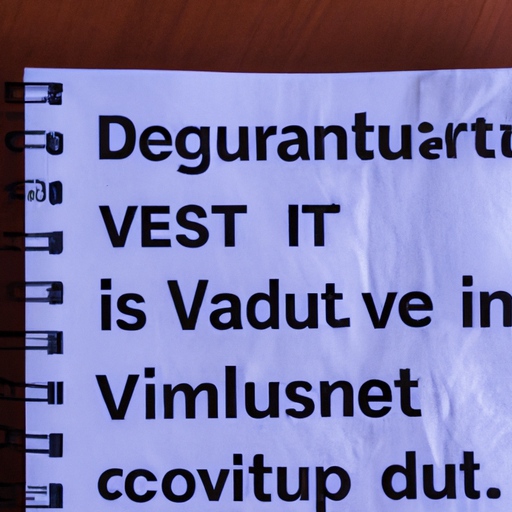Creating Additional Value Through Bundles
Hey there, bundle-lovers, cash-savers, and business mavericks! You’ve landed in the right spot if you’re looking to kick it up a notch with your sales strategy, or if you’re just here in search of a great deal. Buckle up, this is going to be a wild ride!
What’s the Big Deal About Bundles?
Alright, let’s get down to brass tacks. You might be wondering what all this hullabaloo about ‘bundling’ is. Well, hang tight, we’re diving in.
Simply put, a bundle is where you group together several of your products or services and sell them as a package deal. It’s like hitting a triple whopper – you get fries, a burger, and a soda all in a single whammy!
Harvard Business Review states that bundling increases your value proposition, upsells your products or services, and even boosts your competitive edge. Not too shabby, eh?
So, How Do I Bundle Up?
Good question, high-five for your enthusiasm! Below are some rockin’ ways you could bundle your products or services:
- Product Bundles: Combine products that complement each other. Think peanut butter and jelly, rock and roll, or Batman and Robin.
- Service Bundles: Offer packages of your services. Fitness experts, let’s talk a year-long gym membership with a personal training kicker!
- Discount Bundles: Create a price knockdown when customers buy in bulk. It’s a win-win!
Show Me the Money!
Bundling doesn’t just sound cool; it helps you make more moolah too!
Firstly, it increases the average transaction size. More products or services in a single purchase equals more cash in your pocket. Secondly, it can also improve customer loyalty as folks appreciate the value and convenience your bundles offer. They’ll come back for more, ‘cause who doesn’t love a good deal?
Money Management International explains just how bundling can be a financially smart choice for businesses and consumers alike.
To Bundle or Not to Bundle
Before you start putting together every item or service you provide in a giant bundle, stop and think. Smart bundling is key.
Ensure the items in your bundle complement each other and provide genuine value to your customer. After all, nobody wants to buy a combo of a hairbrush and a pizza cutter, right?
Bundling: A Wrap Up
A properly planned and executed bundle can be a game changer. They’re fun, appealing, and can create some serious value for both you and your customers.
So are you ready to bundle up and win big? Go ahead, jump in, the water’s just fine!
And remember, successful bundling is not just about throwing random products or services together. It requires thoughtful planning, a deep understanding of your customer’s needs, and strategic pairing of products or services that complement each other. Devised wisely, it can not only drive your sales up but also strengthen your relationship with your customers.
So, put on your thinking caps, evaluate your products or services, and start exploring the fascinating world of bundling. It can turn out to be a game-changing strategy for your business!
Successful Bundle Examples
Let’s take a look at some tried and tested bundle examples to get you inspired.
- Netflix – What used to be a mail order DVD company, now bundles a wide variety of movies, TV shows, and documentaries for a small monthly fee. Their value proposition? Unlimited access to all the content you want, anytime, anywhere, on nearly any Internet-connected screen, all without commercials.
- Spotify – Spotify began offering a bundle package with Hulu. For only a few dollars more than the usual Spotify Premium package, subscribers get access to Hulu’s extensive library of TV shows and movies. A boon for those who want both music and visual entertainment.
- McDonald’s – The good old McDonald’s Value Meal, made up of a burger, fries and drink is a classic example of bundling. It’s been so successful, it’s been replicated across almost every fast food chain worldwide.
- Amazon Prime – Amazon Prime’s bundling is a little different. For an annual or monthly fee, members have access to a ton of benefits including free two-day shipping on millions of items, unlimited streaming of movies and TV shows, access to Kindle books to borrow, and much more.
These examples worked because they understood their customers’ needs. They offered combinations that made sense and provided value. So, the key is to not just make random pairs, but to carefully think about what would genuinely appeal to your customers.
Bundling Pitfalls to Avoid
As with any strategy, there are potential pitfalls to be aware of when considering bundling:
- Incorrect pairing: As we’ve stressed, a successful bundle is one where the items make sense together. The products should be relevant to each other and should complement each other. For instance, a bundle including hair care products and a pizza cutter would make little sense and rarely appeal to customers.
- Overcharging: The main appeal of a bundle is that it usually costs less than purchasing each item separately. If the bundle is priced too high, it loses its appeal.
- Overwhelming the customer: While the concept of ”more for less” can be enticing, offering too many options or a bundle that’s simply too big can lead to decision paralysis, where a customer can’t decide if the bundle is a good deal and opts not to purchase.
Overall, with the right approach and careful planning, bundling can enhance your marketing strategy and lead to increased sales and customer satisfaction.
How to Implement a Successful Bundling Strategy
If you’re considering implementing product bundling into your marketing strategy, here are a few tips to keep in mind:
- Understand your customer: Knowing your customer’s needs and preferences allows you to create bundles that provide value and solve a problem, or fulfill a need. Collect data about your customers’ buying habits to offer relevant combinations.
- Combine complementary products: Pair products that are used together, or complement each other. This not only provides value but makes sense to the customer. For example, a shampoo and conditioner bundle, or a smartphone with a case and screen protector.
- Offer a discount: A bundle should be cheaper than the total price of the individual products. This gives the customer a sense of getting a deal and is a great incentive.
- Keep it simple: Too many choices can overwhelm the customer. Offering a few carefully chosen bundles can make the decision process easier and increase the likelihood of a purchase.
Conclusion
Product bundling is an effective marketing strategy used by many successful businesses to drive sales and increase customer satisfaction. The key to a successful bundle is understanding your customer’s needs and offering combinations that provide value and make sense. Carefully planning your bundling strategy can enhance your marketing efforts and lead to overall business growth.


